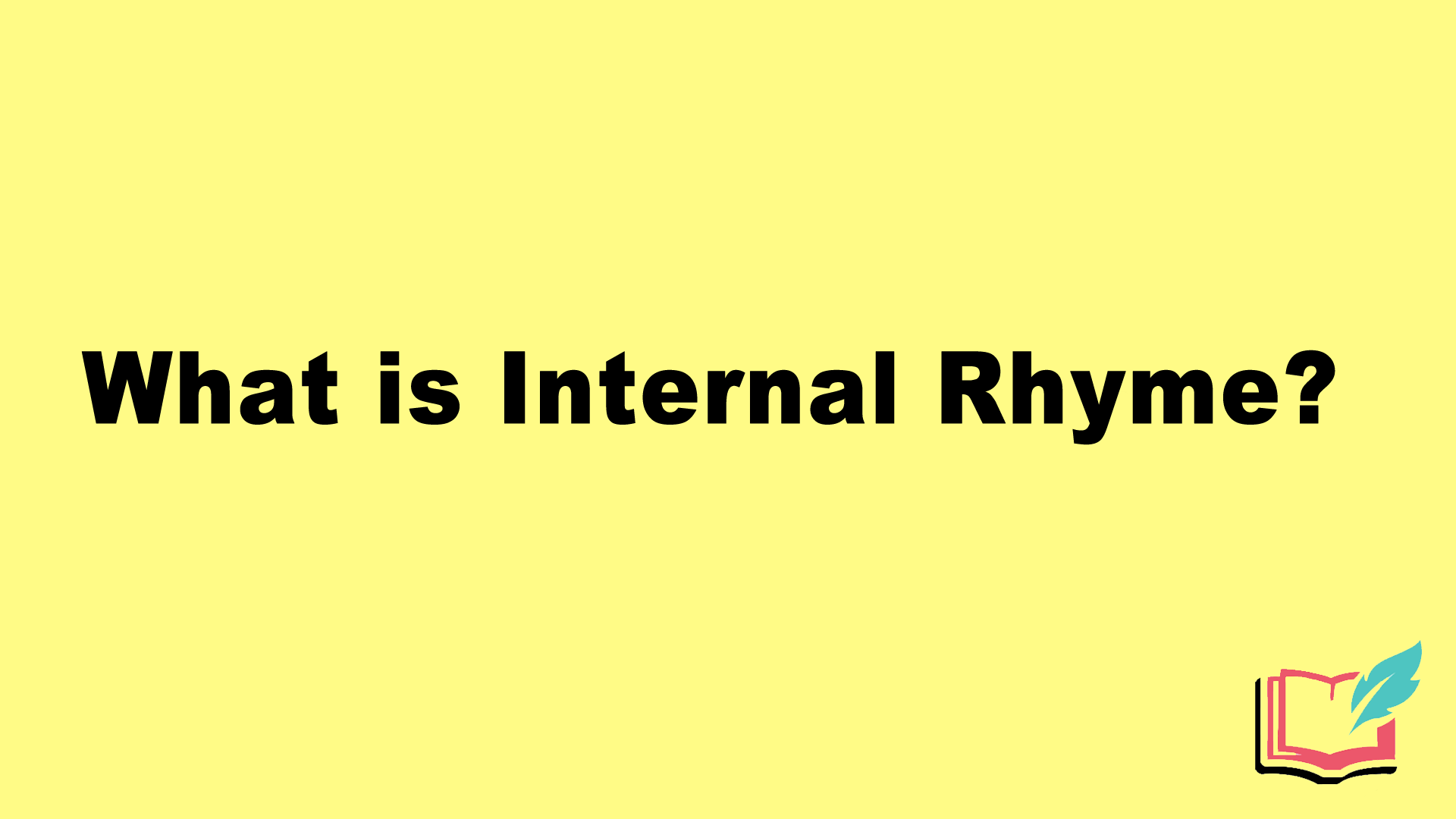
Internal rhyme is a poetic device in which a writer includes rhyming words within the same line or phrase. In poetry, internal rhyme is called “middle rhyme” since the rhymes happen within the phrase, rather than just at the end.
What is an Internal Rhyme?
An internal rhyme is a device used in metered writing such as poetry in which the rhyming takes place within a line or phrase, rather than just at the end of each line. With internal rhyme, a single rhyme can occur multiple times within one line, or it can be spread out through several lines. Internal rhyme can be found in any type of poetry, regardless of its meter or rhyme scheme.
There are three key ways in which internal rhyme occurs:
- Within the same line – The rhyme occurs several times but only within the same line
- Edgar Allan Poe’s poem “The Raven” is full of internal rhyme. For example, “Ah, distinctly I remember it was in the bleak December”
- Separate line – Rhymes over the span of multiple lines that are found in the middle of each line
- Again, from “The Raven,” – “As of some one gently rapping, rapping at my chamber door./ “’Tis some visitor,” I muttered, “tapping at my chamber door—”
- Middle and end of a line – The rhyming words are found both in the middle of a line and at the end of a line.
- Again, from “The Raven,” – “While I nodded, nearly napping, suddenly there came a tapping/As of someone gently rapping, rapping at my chamber door.”
- Again, from “The Raven,” – “While I nodded, nearly napping, suddenly there came a tapping/As of someone gently rapping, rapping at my chamber door.”
Modern Examples of Internal Rhyme
Internal rhyme can be found in song lyrics often. Here are a few popular examples:
“Hey Jude” by The Beatles uses the type of internal rhyme in which middle words and end words are rhymed:
Hey Jude, don’t make it bad
Take a sad song and make it better
Remember to let her into your heart
Then you can start to make it better
Hey Jude, don’t be afraid
You were made to go out and get her
The minute you let her under your skin
Then you begin to make it better
The traditional American folk ballad “Oh My Darling, Clementine” provides another example.
Near a cavern, across from a canyon,
Excavating for a mine,
Lived a miner, forty-niner
And his daughter Clementine
How I missed her, how I missed her, how I missed my Clementine!
Til’ I kissed her little sister, and forgot my Clementine.
Finally, modern poet Gwendolyn Brooks uses internal rhyme in her famous poem “We Real Cool”
THE POOL PLAYERS.
SEVEN AT THE GOLDEN SHOVEL.
We real cool. We
Left school. We
Lurk late. We
Strike straight. We
Sing sin. We
Thin gin. We
Jazz June. We
Die soon.
The Function of Internal Rhyme
The main function of internal rhyme is to create rhythm in lines of verse. This rhythm, in turn, creates a musical effect which is why internal rhyme is so common in lyrics of songs. Essentially, devices like internal rhyme help to make language have a more beautiful effect than it would otherwise.
Additionally, internal rhyme can be used to emphasize a poem’s key ideas. Even though a concept may span lines and not fit in with traditional rhyming structures, adding a rhyming element that applies to key words regardless of where they are found in a line will bring the reader’s attention to that idea. Rhyming helps to make the idea more emphatic because it is more easily remembered and noticed that way.
Examples of Internal Rhyme in Literature
Internal rhyme is found in various pieces of classic literature. Here are a few examples,
William Shakespeare’s Macbeth uses internal rhyme in one of its most famous lines from The Witches. This use of internal rhyme helps to set the mood of the scene, which is eerie and full of malicious intent:
Double, double toil and trouble,
Fire burn and cauldron bubble…
In The Rhyme of the Ancient Mariner by Samuel Taylor Coleridge, internal rhyme helps to create a lyrical, musical effect that gives emphasis to the deeper meaning of the poem. For example, notice how the last line of the following excerpt stands out more since it doesn’t use the same kind of internal rhyme, and consider what that does to how you notice those words:
The ship was cheer’d, the harbor clear’d,
And every day, for food or play,
In mist of cloud, on mast or shroud…
Whiles all the night, through fog-smoke white,
Glimmer’d the white moonshine.
“Annabel Lee” by Edgar Allan Poe uses internal rhyme to help enhance the mood of the poem, which is a gloomy dreamy effect:
For the moon never beams without bringing me dreams
Of the beautiful Annabel Lee;
And the stars never rise but I feel the bright eyes
Of the beautiful Annabel Lee;
And so, all the night-tide, I lie down by the side
Of my darling, my darling, my life and my bride.”
Recap: What is Internal Rhyme in Literature?
Internal rhyme is a device used in verse that uses rhyming in the middle of lines or phrases instead of solely at the end. This helps to create rhythm and enhances the lyrical nature of words.
